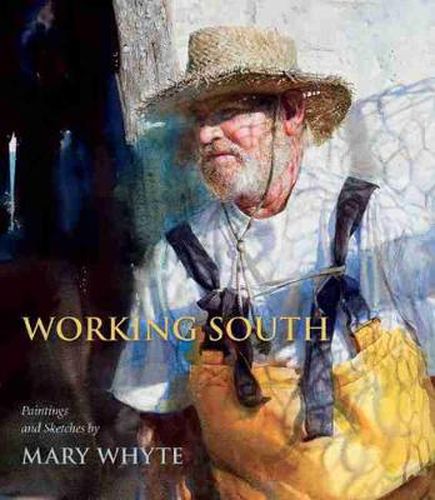Readings Newsletter
Become a Readings Member to make your shopping experience even easier.
Sign in or sign up for free!
You’re not far away from qualifying for FREE standard shipping within Australia
You’ve qualified for FREE standard shipping within Australia
The cart is loading…






In Working South, renowned watercolorist Mary Whyte captures in exquisite detail the essence of vanishing blue-collar professions from across ten states in the American South with sensitivity and reverence for her subjects. From the textile mill worker and tobacco farmer to the sponge diver and elevator operator, Whyte has sought out some of the last remnants of rural and industrial workforces declining or altogether lost through changes in our economy, environment, technology, and fashion. She shows us a shoeshine man, a hat maker, an oysterman, a shrimper, a ferryman, a funeral band, and others to document that these workers existed and in a bygone era were once ubiquitous across the region.
When a person works with little audience and few accolades, a truer portrait of character is revealed, explains Whyte in her introduction. As a genre painter with skills and intuition honed through years of practice and toil, she shares much in common with the dedication and character of her subjects. Her vibrant paintings are populated by men and women, young and old, black and white to document the range Southerners whose everyday labors go unheralded while keeping the South in business. By rendering these workers amid scenes of their rough-hewn lives, Whyte shares stories of the grace, strength, and dignity exemplified in these images of fading southern ways of life and livelihood.
Working South includes a foreword by Martha Severens, curator of the Greenville County Museum of Art in Greenville, South Carolina.
$9.00 standard shipping within Australia
FREE standard shipping within Australia for orders over $100.00
Express & International shipping calculated at checkout
In Working South, renowned watercolorist Mary Whyte captures in exquisite detail the essence of vanishing blue-collar professions from across ten states in the American South with sensitivity and reverence for her subjects. From the textile mill worker and tobacco farmer to the sponge diver and elevator operator, Whyte has sought out some of the last remnants of rural and industrial workforces declining or altogether lost through changes in our economy, environment, technology, and fashion. She shows us a shoeshine man, a hat maker, an oysterman, a shrimper, a ferryman, a funeral band, and others to document that these workers existed and in a bygone era were once ubiquitous across the region.
When a person works with little audience and few accolades, a truer portrait of character is revealed, explains Whyte in her introduction. As a genre painter with skills and intuition honed through years of practice and toil, she shares much in common with the dedication and character of her subjects. Her vibrant paintings are populated by men and women, young and old, black and white to document the range Southerners whose everyday labors go unheralded while keeping the South in business. By rendering these workers amid scenes of their rough-hewn lives, Whyte shares stories of the grace, strength, and dignity exemplified in these images of fading southern ways of life and livelihood.
Working South includes a foreword by Martha Severens, curator of the Greenville County Museum of Art in Greenville, South Carolina.